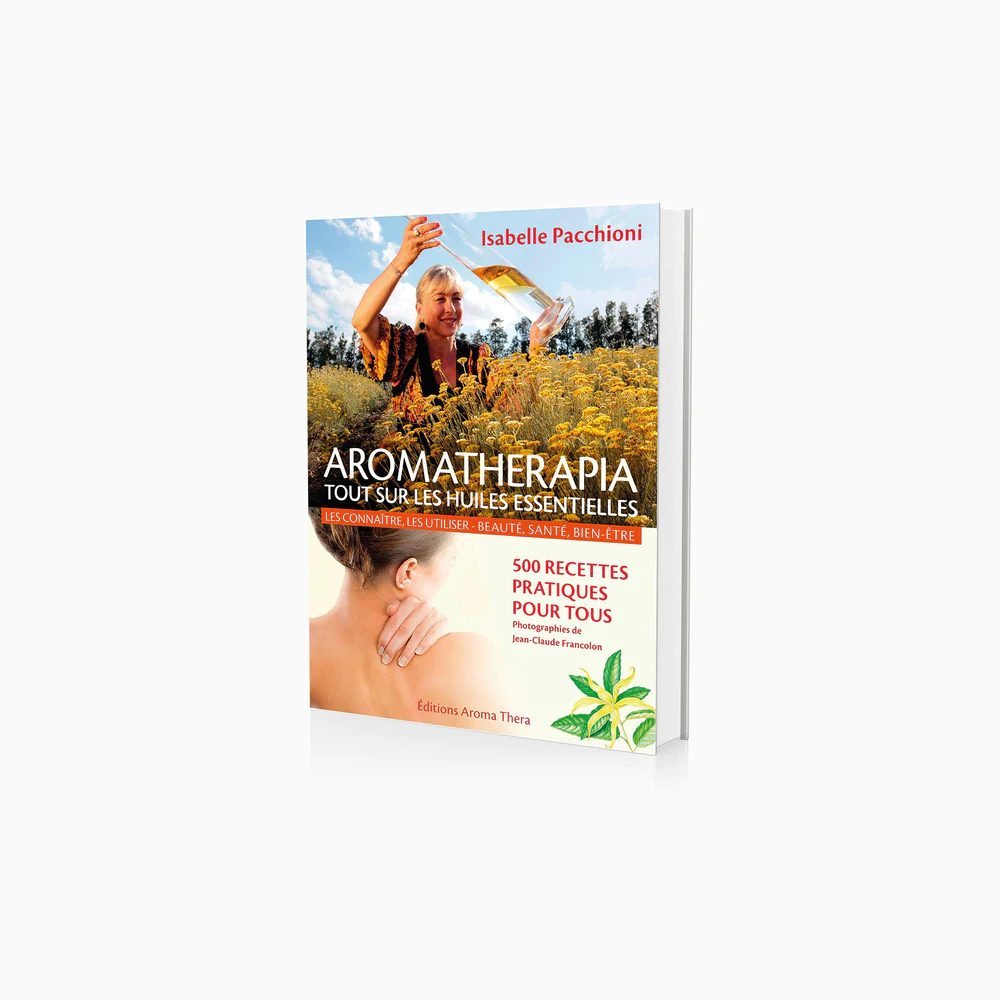
Roman Chamomille
Chamaemelum nobile
Its stems are hairy and the whitish green leaves are finely divided in short and narrow lobes. The capitulum is formed of white ligulate florets covering each other and surrounding a yellow tubular disc flower. The fruit of chamomile is yellowish, small and ribbed.
Main aromatic molecules: Aliphatic esters (isobutyl, methyl-allyl and isoamyl angelates), monoterpenols (pinocarveol), ketones (pinocarvone).
Family: Asteraceae.
Producing organs: Flowering tops.
Yield: 400g to 1kg of essential oil per 100kg of flowers.
Equivalence: 1ml → 34 drops (dosage calculated for a calibrated dropper European Pharmacopoeia).

Bath

Skin application

Oral route

Respiratory route
To relieve anxiety, breath directly from a bottle of essential oil of Roman chamomile over two to three seconds.
Stress
Apply a few drops of essential oil of chamomile on the solar plexus, along the spinal column, under the arch of the foot and the internal flexion creases of the wrists.
Do not use in: pregnant or breast-feeding women, children under the age of six years, due to the presence of ketones, subjects with epilepsy, persons allergic to one of the components (limonene), subjects with asthma without the advice of an allergologist before the first use.


AROMATHERAPIA
Extracts from the book ’Aromatherapia – All about essential oils’, by Isabelle Pacchioni, watercolors by Patrick MORIN, Aroma Thera Editions . Extracts from the book ’41 essential oils essential for treating yourself differently’ and ’48 essential oils which every home needs to be healthy’ by Isabelle Delaleu and Isabelle Pacchioni, Publications of the Mandadori France group. Botanical illustrations by Agathe Haevermans.
The properties, benefits and method of use are given for information; they cannot in any case constitute or replace medical information that only health professionals can provide. For any use of essential oils for therapeutic purposes, please consult your GP or pharmacist.
Fri leverans
Fri leverans vid köp över 500kr
Kontakt
Kontakta oss så hjälper vi dig!
Herbarium
Lorem ipsum dolor
Alla våra produkter
Alla produkter finns att hitta på hemsidan